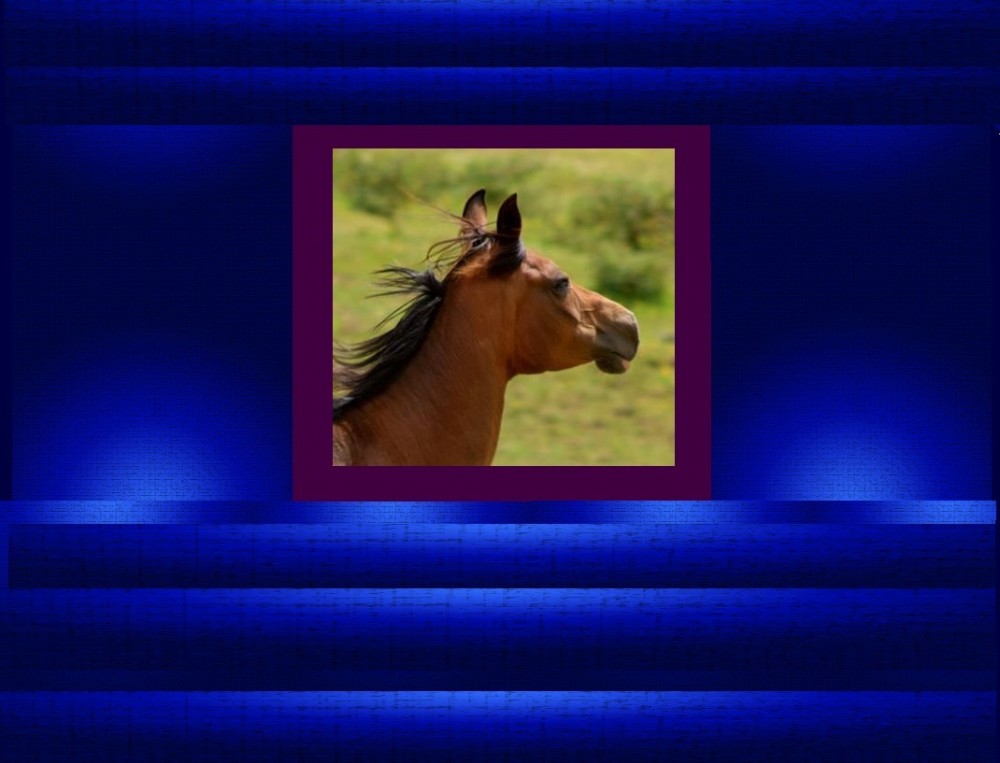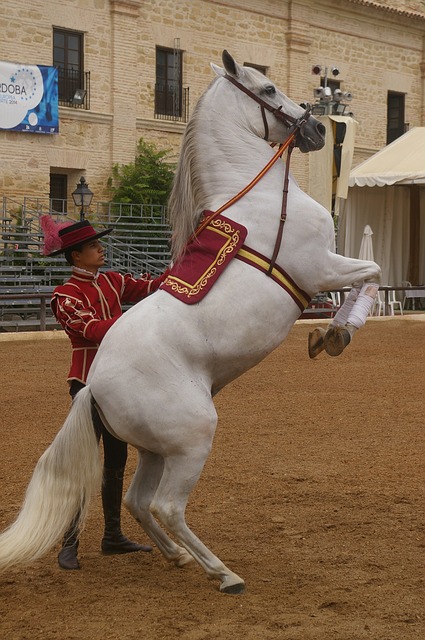As we used to say when we were kids, “1, 2, skip a few, 99, 100!”
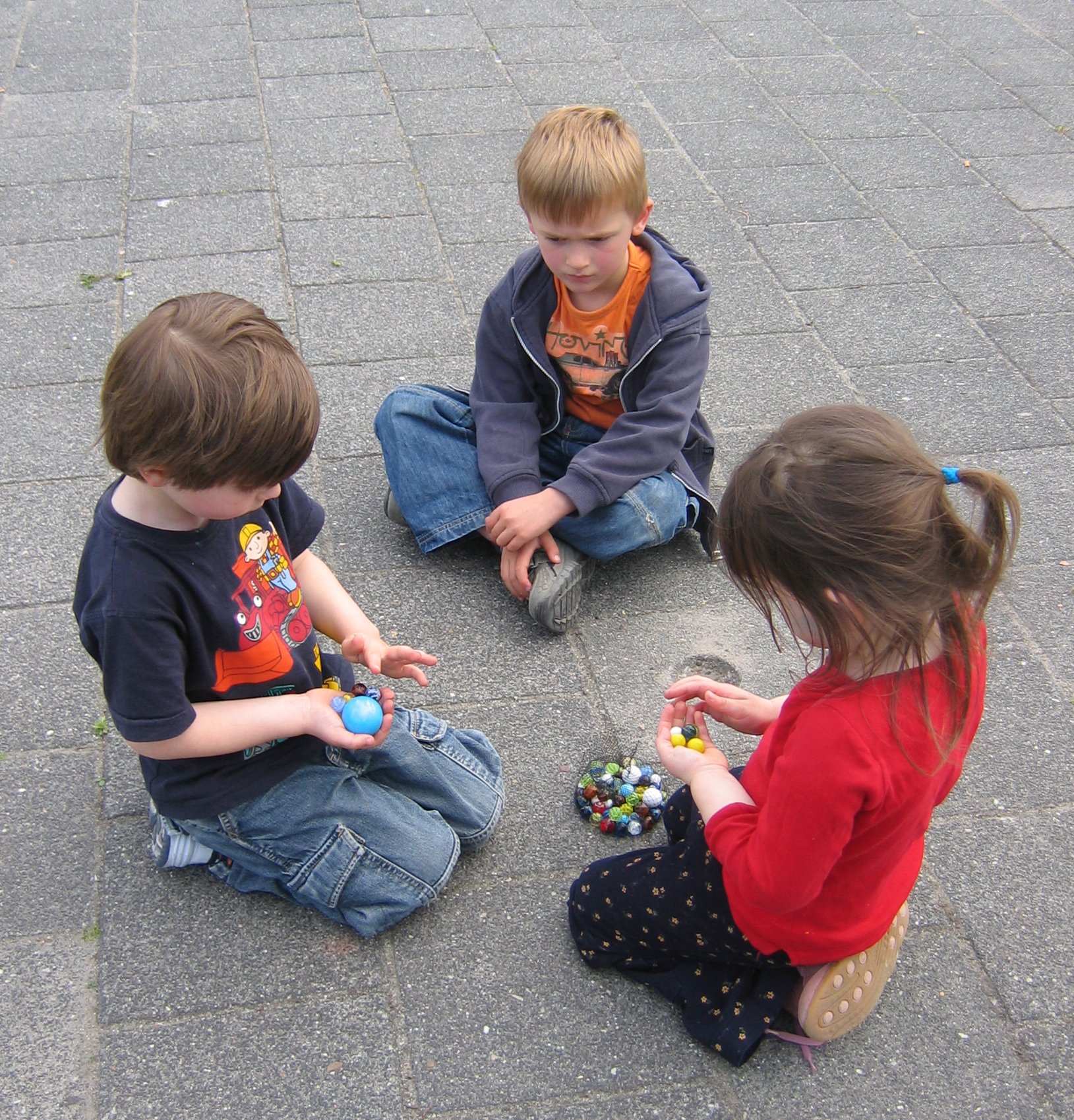
There is a popular catch all phrase in the horse world. Any time a horse has a behavioral issue, it is blamed on “skipping steps” in his training. This puzzled me for a very long time. What were these mysterious steps of horse training, and where could I learn about them? It seemed like every horse I met had problems based on these skipped steps. For awhile it worried me to buy a trained horse…what if some steps had been skipped? It seemed the horse would be doomed to always have training issues.
The problem I found was that while every trainer talked about steps and how important it was not to skip any, there was very little information on what the steps were and the sequence to do them in. Yet everyone said that any horse with an issue had some missing steps in his training. “Bring him back to the basics!” I heard. “Start over!” What do they want me to do…teach him how to wear a halter? How to allow human touch? It felt silly and it was. The horse had an issue in a certain area, not with everything he’d ever been taught. Truthfully, horse training both is and isn’t a step by step process.
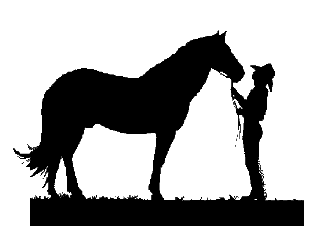
Horse training IS a step by step process, because anything you teach a horse must be broken down into manageable and understandable segments. Horse training is also a step by step process because some things must be done before other things are done. However, rather than being some mysterious process that only trainers can understand, these are quite logical. For instance, a horse must learn how to wear a halter before learning how to be led in a halter. A horse must accept a bit in his mouth before he can learn how the bit can be used to cue him. Yet it many things that are described as part of a step by step process are not actually necessarily linear, nor are they seen by the horse as related to each other.
For instance, you might teach a horse to wear a saddle and be ridden without ever teaching him to allow his feet to be picked up and handled. While both are aspects of good training, they are not steps or in any way related in the horse’s mind. There are well trained saddle horses that do not know how to allow their feet to be handled, or how to tie, or do a number of other things. If a rider were to have an issue under saddle such as bolting, this would have absolutely nothing to do with “skipping steps,” or not doing enough ground work, but would instead reflect on the horse’s training and experiences under saddle. In fact, I’ve seen some horses that are real terrors to handle on the ground but as soon as a rider sits in the saddle they turn into perfectly trained and well behaved angels.

A good example of a step by step process is teaching a horse to jump. A gradual progression of obstacles beginning with very simple poles and moving on to more difficult puzzles will teach a horse how to gauge distances, use his body correctly and feel confident about jumping. Likewise, if the horse does not know how to turn, stop and change gaits, then these steps must be accomplished before he can be expected to be manageable while jumping. Yet even these two skills are slightly unrelated – the horse can potentially be a great jumper while being unmanageable between jumps if one skill has been learned well and not the other.
An example of training that is not related to a step by step process is relating the fact that a horse won’t walk quietly beside you on the lead to whether the horse has been trained in a round pen. Teaching a horse to lead is a step by step process that can be done on a lead line. If a horse does not know how to lead, that does not mean it was because a step was skipped when teaching him to wear a halter, or tie, or stand for grooming. It also does not mean he must be sacked out or “bomb proofed.” What I see is people who are afraid to continue with horses or work with horses because some mysterious skipped step back in the beginning of their training means the horse is like a jenga puzzle and everything will soon fall apart if the training is taken farther. They feel that unless someone can take the puzzle apart down to the first level and put it back together correctly, the horse cannot continue or improve. In my experience, a horse might always have issues in a certain area whether brought back to square one and started over or not. It has worked out just as well for me to focus on areas of concern and not worry about the horse’s past, missing pieces or otherwise. If the horse can’t lead, work on leading.
A problem I’ve seen myself and others have is that we feel someone must have skipped steps with a horse when it is really we who are skipping the steps. Here’s an example and it highlights also how horses see things differently than we do:
A horse with known separation anxiety…the owner works consistently to gradually increase the time spent away from other horses. After a couple of years of working, the horse can be brought into the barn with minimal anxiety, saddled and ridden out alone. Now the horse is moved to a new barn. When the same process is attempted, the horse becomes very agitated and upset during the saddling and getting ready for riding. The owner is puzzled…why has the horse gone backwards with the training?
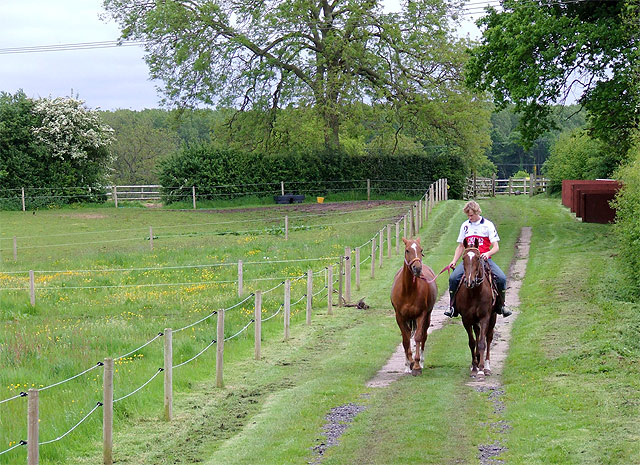
After evaluating the situation, the owner realizes that even though the horse was brought into the barn to be saddled, the old barn had large, open doorways and the horse was tied where she could see her pasture mates out grazing. The horse had become accustomed to this process. At the new barn, the horse was led down a hill through a forest and was both farther away physically from the herd while being saddled, and also the other horses were out of sight. While both situations might seem similar to the owner, the horse perceived things as very different.
The owner was “going too fast.” She could either always saddle and bridle the horse in sight of the herd up on the hill and then ride away – a skill the horse has learned in the past, or she could begin gradually conditioning the horse by preparing the horse for riding at slowly increasing distances from the other horses.
I believe most of our issues with horses are related to current events that are affecting the horse. If the horse today does not know how to back up, we can teach him how. If he has been handled poorly or steps were skipped in teaching him how to back, we don’t have to re-teach him everything he’s ever learned, just about how to back. If the horse does not learn well during this process, that’s because it is we who are skipping steps right now and need to break things down into a more understandable process for the horse. This includes making sure his anxiety level is low enough so he can concentrate and learn, or that his energy level is high enough to respond to what we are asking.
Most of the time, I think we can solve a lot of problems by focusing on the actual problem at hand, and then making sure the horse is understanding what we are asking. Once the horse understands, we need to remember that the horse has to practice doing the skill a bunch of times to get it solidly in his mind. Also, we must make sure the environment is one the horse can learn in; he can’t be sick, frightened, hungry or in pain or all our effort will be wasted. That is the most important step we often skip as trainers: having a horse that is capable of learning. Most everything will fall into place after that.

Here are my steps for training a horse:
1) Begin with a horse capable of learning: free from sickness, pain, hunger or fright.
2) Show him what you want him to do. If he seems to overreact, you’re going too fast or being too aggressive. If he doesn’t try, you’re being too passive.
3) Be calm, have endless patience, get rid of any timelines.
4) Practice the skill until he can do it consistently.
5) If you don’t know how to do the skill, don’t expect to teach him how.
Yay, you’re a horse trainer.
